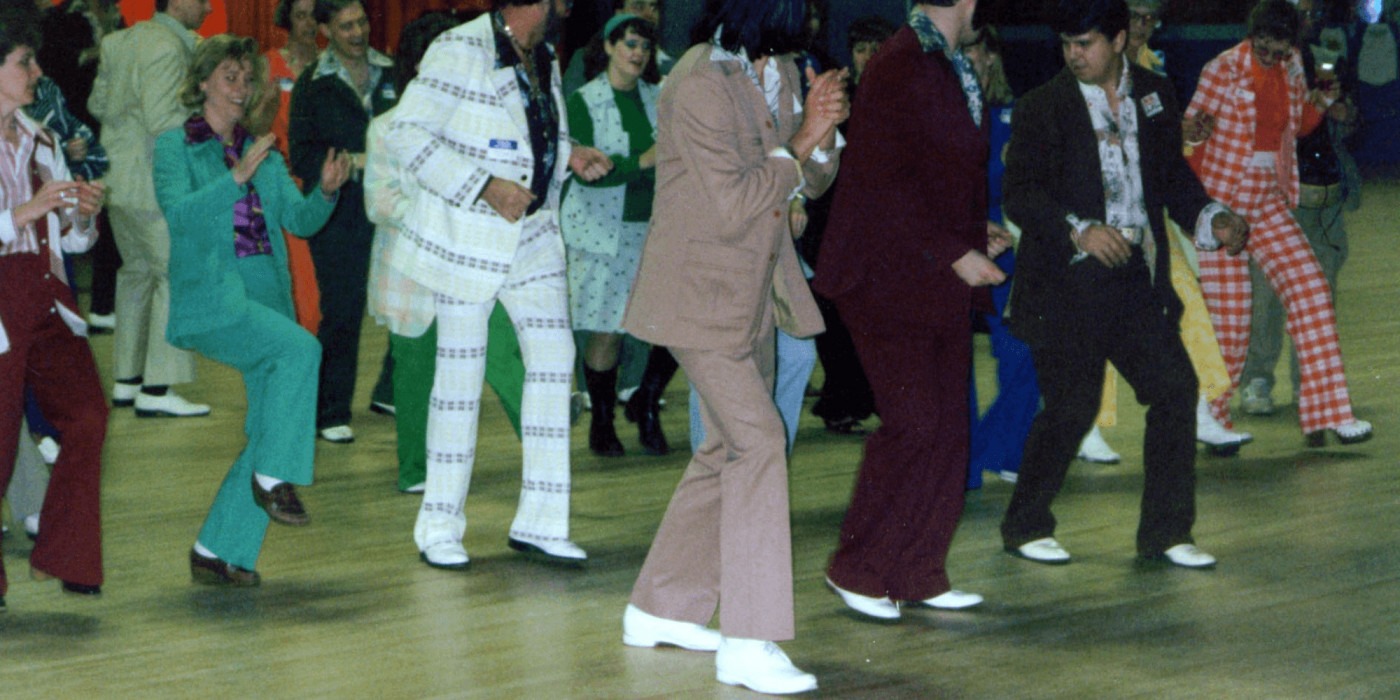The renaissance of flared trousers: why are they back in 2023?
I grew up in the era of skinny jeans: the generation of ripped knees and the stretchy jeggings. It was the phase of skin-tight denim that just never looked quite right – too loose at the waist, too tight on the thigh, and too uncomfortable to wear for more than two hours. Whilst it was a fit that worked for Paris Hilton and Britney Spears, it just didn’t work for me. However, a couple of years ago, jeans on the high street began to diversify. New shapes included wide-leg, boyfriend fit, mom jeans and most notably, flares. Since their quiet demise in the late 1970s, bell-bottoms or flared jeans had become a fashion taboo. They were a relic of a time gone by. Yet, around 2021, they made a triumphant return to our shelves as an item that could add a splash of retro style to anyone’s wardrobe. This included my own wardrobe.
Suddenly, jeans were not as horrific as I had initially thought. Flares seemed to balance my body out. They gave the illusion my legs were longer and even gave low effort outfits a pop of character.
I understood why they were such a staple item in the ’70s. From ABBA to football hooligans and even hippies, they were universally adored by a generation. Yet I wondered, whilst trends like the mini skirt had consistently retrained their grasp on young girls since the 1960s, why had the flared trouser failed to do the same?
Despite being more heavily associated with the 1970s, the origin of flared trousers can actually be traced back to the 19th century. It is believed their earliest origins were around 1817 in the US Marines. Flared trousers were adopted into military uniform on grounds of practicality. Their design meant the trouser legs could easily be rolled up when scrubbing decks, and they were also easier to remove when wet.
For a long time after their adoption by the US Marines, flared trousers remained a style solely associated with the military. However, from 1918 onwards, flared trousers began to be reimagined as a symbol of feminine grace and style. Until then, trousers had been mainly found in menswear and only adopted for practical reasons by working women in World War I. However, Coco Chanel was eager to challenge the status quo and redefine the limits of women’s fashion. She introduced the first high-end fashion trousers specifically for women –known as ‘yacht pants’ or ‘beach pyjamas’. Inspired by the nautical practicality of the US Marines’ trousers, these flared, wide-leg trousers were designed to be worn over women’s swimsuits in yachting season. Soon, they became all the rage for wealthy women in the French Riviera and highlighted how fashion could be both chic and practical for women.
By the 1970s, the flares looked like they were here to stay
Following the birth of the ‘beach pyjamas’, there was a short lull in the development of the flared trouser. Despite this, by the 1960s, this style was back in public discourse. In countries like the US, where anti-war sentiment was on the rise, many young people began thrifting as a revolt against the status quo and a commitment to sustainability. During this movement, many young Americans began to rediscover marine-style flared trousers in army surplus stores. They went on to decorate and embroider these trousers with flowers and peace signs to symbolise their desire for pacifism. However, beyond their political symbolism, this reclamation of the flared trouser was soon picked up by ’60s style visionaries in wider pop culture, such as Mick Jagger, Jimmy Hendrix, and Twiggy.
We are back in thrift shops, looking for future direction through emblems of the past
By the 1970s, the flares looked like they were here to stay. Once again, this cut of trousers was embraced by high-end designers, with Mary Quant posing in flared trousers herself in her 1972 Autumn Collection. On top of this, flares became synonymous with other key cultural moments throughout the decade. From being a fashion favourite of the 1974 Eurovision winners, ABBA, to being sported by John Travolta in the 1977 film Saturday Night Fever, they were everywhere. Unfortunately, the heyday of the ’70s flare was short-lived. By the 1980s, the rising popularity of punk rock music saw flares begin to be revived with skinny jeans, as they were promoted by bands like The Ramones.
Our returned passion for the flared trouser in 2023 perhaps shows us that we are in a moment echoing the 1960s and ’70s. A moment where the youth of society is restless. Just like back then, we are living in a time when society’s youth are angry about social conflicts and injustices. We are back in thrift shops, looking for future direction through emblems of the past. As flared trousers returned to the runway in Dior and Celine’s Spring 2023 collections, we know we are in an age far removed from the glam rock and disco mania of the ’70s. Maybe our generation shares a hunger for change that resembles the restless era of the ’70s. Or perhaps we were simply reacquainted with how flattering a flared leg could be.
Either way, for the foreseeable future, I will be celebrating the return of flares, and dreading the inevitable rebirth of skinny jeans in a few years.

Comments